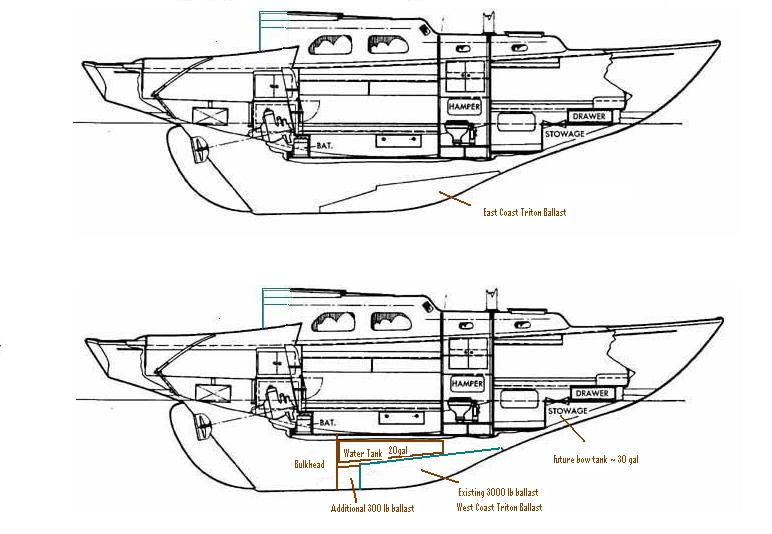Thanks everyone for your comments. It's very educational.
Here are some of my takeaways from this discussion, not in any particular order.
(Who is spoiled by his 67% ballast ratio - [referring to his Shields])
I did not know B/D ratio can go that high, and looking at some Shields sailing photos they still heel over. I think that proves the comments from many here that adding ballast does not add to form stability. As Ted Brewer said you cannot change form (unless you are very wealthy or very handy).
Very true. Before I bought my Alberg, I owned an Endeavour 33 which has a very different hull form than the classic CCA boats like the Triton and Alberg. It had a very flat hull, spade rudder, bolt on keel, high aspect rig, and was almost 2 feet wider than my current Alberg (11.5' vs. 9.7'). As a result, it was a rock initially and it took a fair amount of wind to get the boat over 15 degrees heel. After that however it did not feel balanced and performance began to suffer. At that point the boat would get very 'tender' and would go from 15 to 30 degrees of heel very quickly (almost frighteningly so). More than 15 degrees of heel on this boat was work to keep the boat happy.
Again, I did not know about the stability issue of flatter bottom boats when it heels over passed certain threshold. Glad to have my Triton that has a relative linear heeling angle depending on the wind strength.
PPI (pounds per inch immersion) for a Triton is something around 700-800 lb, as I recall. So your proposed ballast, not including all the other weight that might end up on the boat someday, would lower the boat's waterline by roughly 1/2". That's a lot more wetted surface to push around all the time, and this is the sort of thing that is noticeable under real-world conditions that you're likely to experience. The boat doesn't need "help" to become heavier, it's more of a fight as time goes on to keep excess weight off the boat.
Yikes, I did not know that. To think I will easily add another 1000lb of cruising gear (two water tanks totaling 50 gal, three batteries, outboard engine, 20 gal of fuel, three anchors, 200 feet of chain rode, and god knows what else) I can see the water line moving up a couple of inches.
If you're not used to and accepting of the way the boat heels and sails in regular conditions, I'd suggest you become comfortable with it before considering this platform for your ultimate dreams, else you may be unhappy and disappointed later on.
Love my Triton, but that does not preclude me from searching for ideas to improve her. All things considered (construction, price, looks, forgiveness, other Triton owners, etc...) it is hard to beat.
Thanks again for steering me in the right direction...
Ray D. Chang
Triton 106 in Berkeley, CA








